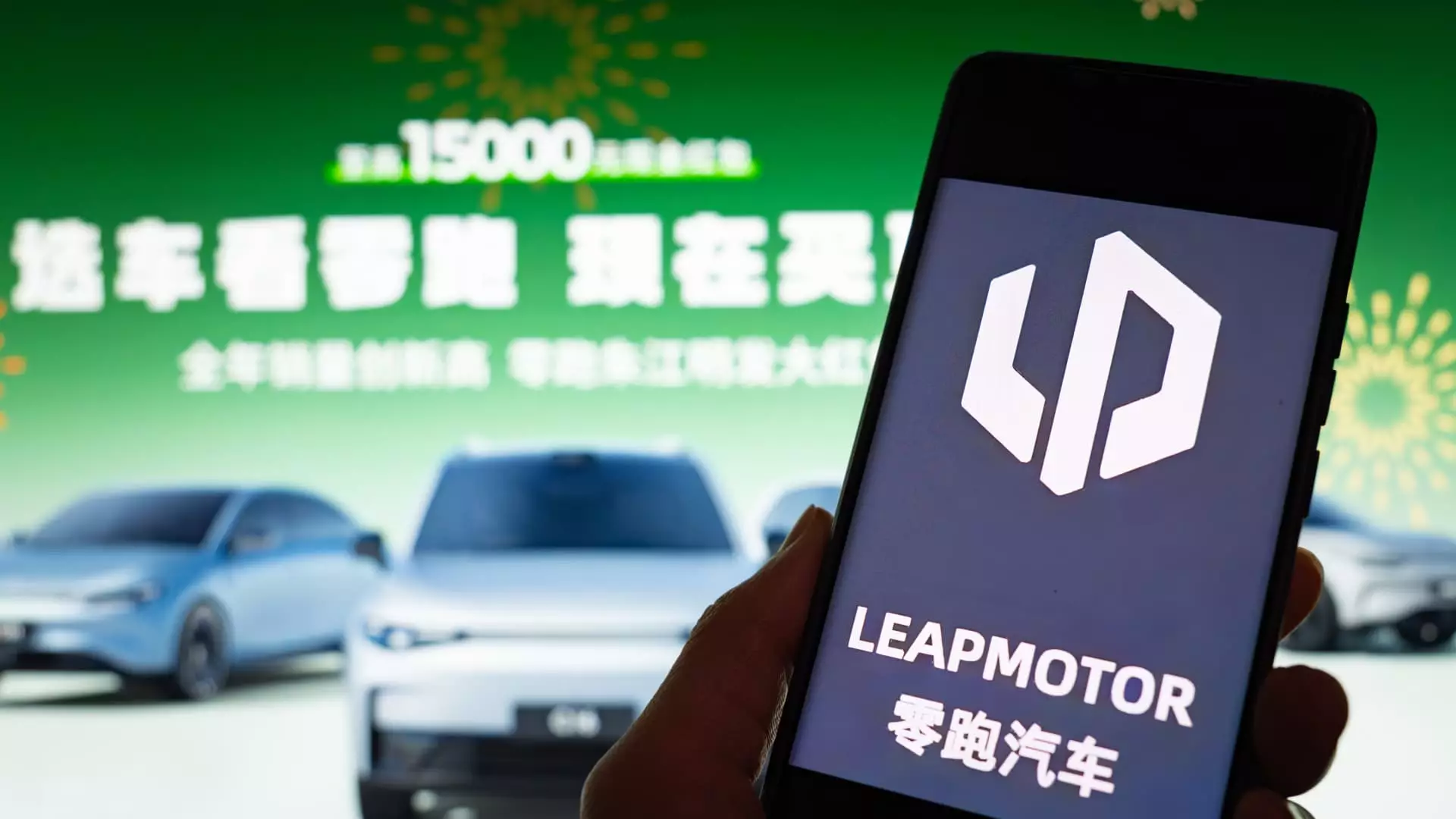The landscape of China’s electric vehicle (EV) market is undergoing a seismic shift, underscored by the remarkable achievements of companies like Leapmotor and Aito, which have set new records for deliveries this May. Leapmotor, under the stewardship of Stellantis, boasted an astonishing delivery of 45,067 vehicles, marking a staggering year-on-year increase of 148%. This performance not only solidified Leapmotor’s place in the rapidly evolving EV sector but also raised questions about the sustainability of such growth in the face of fierce competition.
Not to be outdone, Aito claimed 44,454 deliveries in the same month, while industry behemoth BYD continued to captivate the market with over 376,930 sales. These figures translate to a 14.1% surge in total car sales in a single month, a testament to both the demand for electric vehicles and the aggressive strategies companies are adopting to capture market share. What is particularly striking is how these achievements contrast with the performance of other startups, indicating a clear concentration of growth within a small circle of successful brands.
The Price War: A Double-Edged Sword
At the heart of this dramatic expansion lies a price war that has ignited fierce competition among manufacturers. For instance, BYD recently slashed prices on 22 of its models, with the Seagull hatchback now available at an enticing 55,800 yuan—a 20% reduction. While such aggressive pricing strategies can stimulate sales, they also raise concerns about long-term viability and profitability. This relentless race to the bottom is reminiscent of China’s previous real estate bubble, raising the specter of a potential “Evergrande” scenario—a situation fraught with the risk of financial instability.
Moreover, the implications of this price war are profound and multifaceted. On one hand, consumers are benefitting from more affordable options, but on the other, it places immense pressure on companies to maintain quality while minimizing costs. Industry critics are beginning to voice concerns about whether companies can continue to deliver cutting-edge technology alongside lower prices. The emotional skepticism surrounding the industry mounts as the price war intensifies, with too many players potentially sacrificing quality for quantity.
The Challenges for Startups: Rising Amidst Giants
Startups like Xpeng and Li Auto are grappling with these challenges as they strive to find their footing in a market dominated by giants. While Xpeng’s deliveries showed modest growth, attaining a total of 33,525 vehicles—a year-on-year increase of 230%—the dip from the previous month is indicative of the volatility in the market. Similarly, Li Auto’s deliverables indicated a slight uptick but still fell short of the meteoric rises witnessed by their competitors.
The pressure on these startups is palpable as they struggle to carve out significant market share. Zeekr, with its experimental driver-assistance technology, seems to be taking a different approach to differentiate itself from its competitors. However, their meager 1.6% growth in deliveries raises questions about the efficacy of such differentiation in a saturated market.
Global Expansion and Emerging Opportunities
As these companies navigate their growth trajectories, eyes are turning toward global expansion, especially in emerging markets. The political climate in the U.S. and Europe creates substantial hurdles for Chinese automakers, particularly due to tariffs aimed at stifling their presence in Western markets. Instead, countries in Africa and other regions appear to offer new opportunities for growth, with notable interest from BYD as it makes inroads into places like Benin.
While this shift may provide a lifeline for some companies, it also presents additional complexities. Entering new markets is fraught with risk: different regulatory environments, varying consumer preferences, and the need for localized strategies often challenge even the most well-prepared companies. The desire to innovate and adapt will be critical as these firms aim to establish a foothold outside their domestic stronghold.
As China’s electric vehicle market accelerates toward a front-runner position globally, the trajectory remains uncertain. The financial landscape is marked by fierce competition and a price war that could have ramifications beyond the immediate gains of record deliveries. In this rapidly evolving sector, the only certainty is that these electric juggernauts must remain vigilant and adaptable to thrive amidst formidable challenges.

